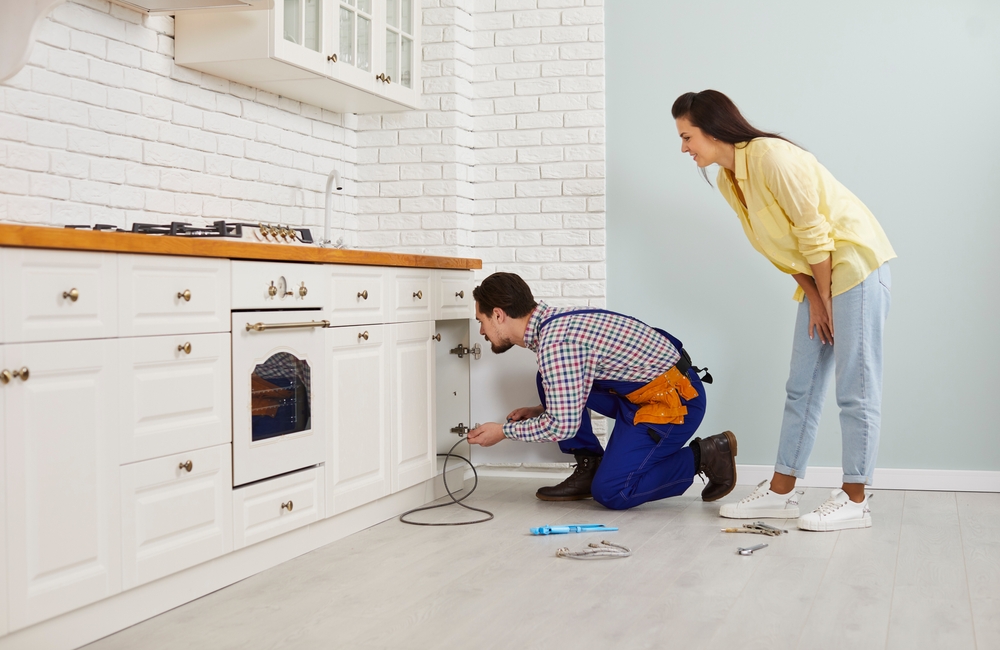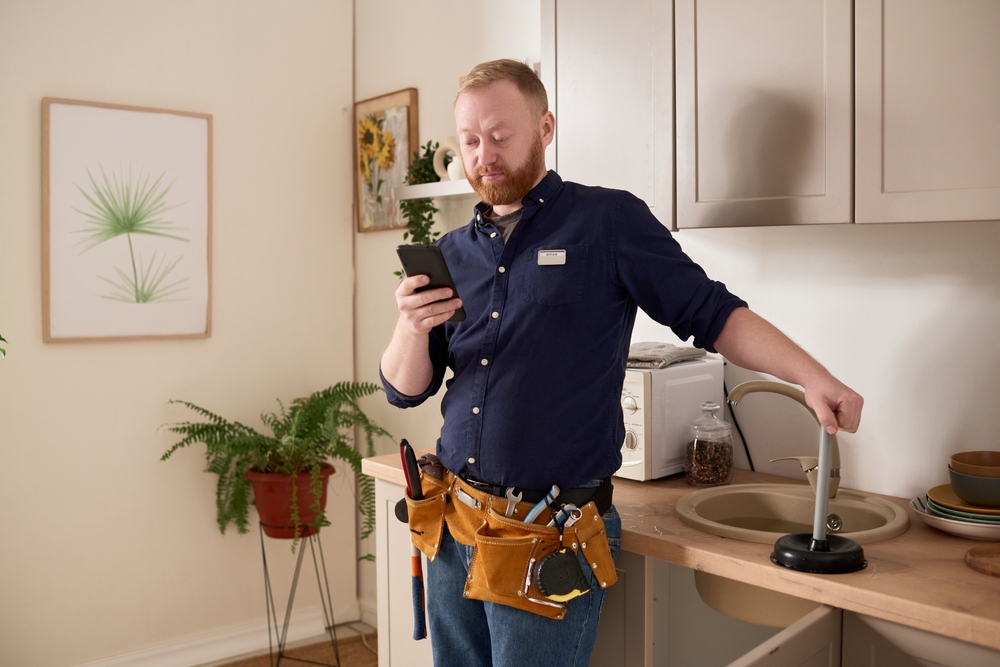Ultimate Guide to Drain Cleaning and Unclogging
We don’t think much about our drains until something goes wrong. A clogged drain can be a minor annoyance or a major disaster, as it could cause floods, bad smells, or expensive damage to your home. But knowing how to clean and clear drains and how to keep them from getting clogged can save you time, money, and stress.
This complete guide will teach you everything you need to know about drain cleaning and unclogging, from how to spot the first signs of a problem to how to use high-tech tools and professional services. Whether you have a small clog or want to keep them from happening again, this guide will give you the information and tools you need to keep your drains clear.
Table of Contents:
- Understanding the Causes of Drain Clogs
- Common Signs of a Clogged Drain
- DIY Drain Cleaning Methods
- Chemical Drain Cleaners: Pros and Cons
- Advanced Tools for Drain Cleaning
- When to Call a Professional Plumber
- How to Prevent Future Drain Clogs
- The Role of Regular Maintenance in Drain Health
- Conclusion: A Proactive Approach to Drain Health
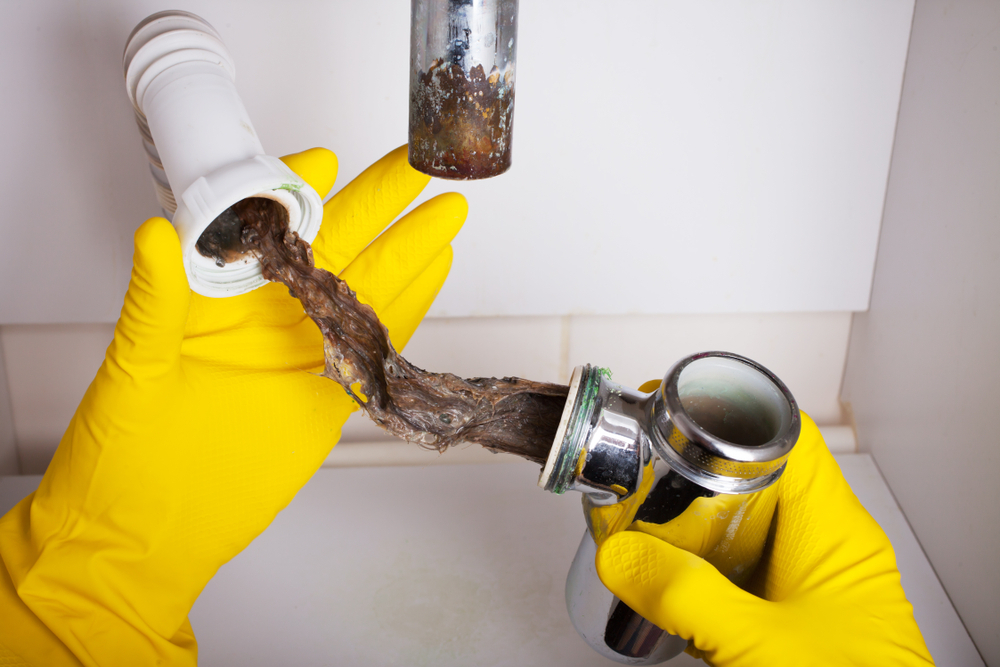
1. Understanding the Causes of Drain Clogs
It’s important to know why drains get stuck in the first place before you try to clear them out. There are many things that can cause clogs, some of which might surprise you. These things can cause problems with bathroom or kitchen sinks, but all of them can be avoided with a little care and attention.
Hair and Soap Scum
Hair buildup is one of the main reasons why drains get clogged, especially in bathrooms. When we take a shower or shave, hair always ends up in the drain. Small amounts of hair build up over time, creating thick masses that stop the flow of water. When hair is mixed with soap scum, a sticky film that forms when soap meets hard water, it can clog the drain very easily.
Soap scum leaves behind a filmy buildup that slows the flow of water and makes it easier for hair and other waste to stick to the pipes. This makes a bigger blockage over time.
Prevention Tips:
- Install drain covers or strainers to catch hair before it enters the drain.
- Clean the strainers regularly to prevent buildup.
- Switch to a liquid soap, which tends to leave less residue than bar soap.
Grease and Fat
A lot of the time, grease and fat get into kitchen sinks when people pour used cooking oils or other greasy things down the drain. These liquids may seem to flow easily at first, but as they cool, they harden inside the pipes. This makes a layer that sticks together and holds food and other debris, which causes clogs.
Buildup of grease is especially bad because it causes problems that last for a long time. Pipes can get hard with even a small amount of grease, and this layer gets thicker over time. The pipe gets so small over time that water has a hard time getting through.
Why It’s a Problem:
When grease cools, it hardens and sticks to the inside of your pipes. It gets thicker over time and traps other bits, making a dense clog. This is a big problem in the winter because the grease hardens faster in lines that are cold.
Prevention Tips:
- Never pour grease, oil, or fat down the drain.
- Wipe greasy pans and dishes with a paper towel before washing them.
- Dispose of used cooking oils by pouring them into a container, letting them solidify, and throwing the container in the trash.
Food Waste
There are a lot of people who think their trash disposals can handle anything, but they can’t. Garbage disposals are useful, but they’re not made to deal with all kinds of food waste. Things like eggshells, coffee grounds, fibrous veggies (like celery), and starchy foods (like rice and pasta) can cause big clogs.
For example, fibrous veggies can get stuck in the garbage disposal’s blades. Starchy foods also expand when they get wet, which makes a clog more likely.
Common Food Items That Clog Drains:
- Coffee Grounds: These don’t break down in water and can stick together in lines and stop them from working.
- Eggshells: The tiny pieces of eggshell may not seem dangerous, but they can stick together with grease and other things to make a tough clog.
- Starchy Foods: Foods like pasta, rice, and potatoes can swell and become sticky when exposed to water, making them prime candidates for clogs.
- Fruit Pits: While it may seem obvious not to put something like a peach pit down the drain, smaller seeds or pits from fruits such as cherries or olives can get lodged in your pipes and cause blockages.
Prevention Tips:
- Scrape food scraps into the trash or compost bin, especially fibrous or starchy foods.
- Limit what you put into the garbage disposal, and run cold water while using it to flush out particles.
Mineral Buildup
Minerals like calcium and magnesium can build up in your lines over time if you have hard water at home. This buildup, which is also called “limescale,” makes the inside of your pipes narrower, which stops water from flowing and causes a clog. This process is slower than other ways that clogs happen, but if you don’t stop it, it can lead to big problems.
How to Spot Mineral Buildup:
If you see white, chalky buildup around your taps and showerheads, that means your water has a lot of minerals in it. These chemicals will also build up in your pipes over time, which will make clogs more likely.
Prevention Tips:
- Install a water softener to reduce the mineral content in your water.
- Regularly clean showerheads and faucets to prevent buildup.
- Flush your drains with vinegar and baking soda periodically to break down any developing deposits.
Foreign Objects
Objects from outside the drain often get stuck by accident, especially in homes with kids. Small toys, jewelry, toothpaste caps, and other tiny things can fall into drains and get stuck. People often flush things that shouldn’t be flushed, which makes toilets the most likely to get clogged with strange objects.
Common Non-Flushable Items:
- Baby wipes, even if labeled as “flushable.”
- Cotton balls, dental floss, and Q-tips.
- Feminine hygiene products, such as tampons and pads.
- Paper towels, which don’t break down like toilet paper.
Prevention Tips:
- Educate family members on what can and cannot go down the drain.
- Use child-proof drain covers in homes with young children.
- Keep small objects away from sink edges to avoid accidental drops.
Tree Roots
Tree roots, which are hard to see, often jam sewer lines and drains. This is especially true in older homes with pipes that are buried. Roots of trees naturally look for water, and any small holes or cracks in pipes beneath are a good place for them to find it. If roots get into a pipe, they will continue to grow inside it until it becomes clogged or breaks completely.
Warning Signs of Tree Root Infiltration:
- Multiple drains in the house clogging simultaneously.
- Gurgling sounds coming from the drains.
- Frequent backups in toilets or slow drainage throughout the house.
When there are problems with tree roots in pipes, they may need to be fixed or changed by a professional. Some of the tools that plumbers can use to get rid of the roots and fix any damage are water jetting or root-cutting tools.
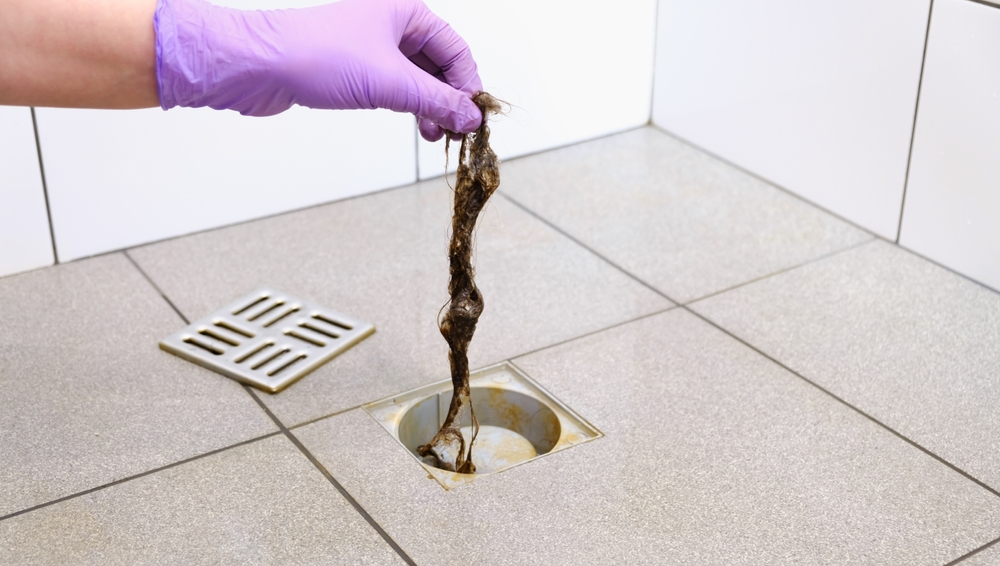
2. Common Signs of a Clogged Drain
If you know how to spot the early signs of a stopped drain, you can avoid bigger problems more quickly. Clogs usually start out small, but if you don’t fix them, they get worse over time. By being aware of these early warning signs, you can take action before a small clog becomes a major plumbing problem.
Slow Draining Water
Water that moves slowly is one of the first and most common signs that there is a clog. If water is taking longer than normal to drain from your sink, bathtub, or shower, this is a clear sign of a partial blockage.
Why This Happens:
It’s getting harder for water to flow through the lines because of a buildup of gunk. As time goes on and more trash builds up, the water will drain even more slowly until it stops.
Examples:
- Water pooling around your feet while showering.
- A bathroom sink that fills up while brushing your teeth.
- Standing water in your kitchen sink after washing dishes.
Foul Odors
Another sign that something is wrong is drains that smell bad. Most of the time, this happens in kitchen sinks, where food can get stuck and start to break down. If you smell something in the bathroom, it could be soap scum, hair, or even germs that has built up.
How to Differentiate:
- Kitchen Drains: A rotting or sour smell likely means food particles are trapped in the drain.
- Bathroom Drains: A musty, mildewy odor could indicate a buildup of soap scum and hair.
If your home’s sewage vent system isn’t working right or the P-trap is dry, sewer gases can leak into your home and cause smells.
Gurgling Noises
If the pipes get clogged and air gets stuck in them, you might hear gurgling or popping sounds as the water tries to get through. Most of the time, these sounds happen after using water in another part of the house, like when you flush the toilet or run the washer.
Sounds like gurgling are a strong sign that a clog is forming deeper in your pipes. To keep things from getting worse, you should act quickly if you hear these sounds.
Standing Water
If water stays in your sink, tub, or shower for a long time after you use it, there is likely a big problem. If there is standing water, it means that the clog is so bad that it stops all water flow, so no water is flowing at all.
Areas to Watch:
- Shower and Bathtub Drains: Water pooling for long periods can lead to mold growth and unsanitary conditions.
- Kitchen Sinks: Standing water can lead to bacterial growth and unpleasant odors, especially if food particles are involved.
Overflowing Toilets
If your toilet overflows after you flush it, the drain is definitely plugged. The issue might only be with the toilet, or it could mean that there is a blockage further down the main water line. When the toilet spills more than once, it’s usually a sign of a bigger problem, like a clogged sewer line or tree roots getting into the pipes.
3. DIY Drain Cleaning Methods
When you have a stopped drain, you might grab the first bottle of chemical cleaner that comes to mind. But before you use strong chemicals, there are a number of effective, non-toxic ways to get rid of the problem. You can do these things yourself, and they are not only better for the world but also safer for your pipes.
Boiling Water
Boiling water is one of the easiest and most effective ways to clear out small jams. This is the best way to clean out kitchen sinks of grease, soap scum, and small pieces of food.
How It Works: Water that is boiling breaks up any tough stuff that is stuck in the lines, like soap scum and grease. This method doesn’t work as well for clogs caused by hair or other foreign items, though.
Steps:
- Boil a large pot of water.
- Slowly pour the boiling water directly into the drain in stages, allowing it to work through the clog.
- Wait a few minutes between each pour to let the hot water dissolve the debris.
- Repeat the process if necessary.
Caution: Be careful when using boiling water on PVC pipes, as excessive heat can cause the plastic to soften over time. If you have plastic plumbing, limit the use of boiling water for clog removal.
Baking Soda and Vinegar
Baking soda and vinegar work well together to clear out drains naturally. These two common home items work together to make a chemical reaction that can clear out clogs without hurting your pipes or the environment.
How It Works: Baking soda is naturally rough and helps scrub away dirt, and vinegar’s acidity breaks down grease and mineral buildup. They work together to make a fizzing sound that can help clear jams.
Steps:
- Pour half a cup of baking soda down the clogged drain.
- Follow this with half a cup of white vinegar.
- Cover the drain with a plug or cloth to keep the reaction contained.
- Wait 10-15 minutes for the fizzing to stop.
- Flush the drain with hot water to clear away the debris.
Additional Tip: For tougher clogs, follow up the baking soda and vinegar with boiling water. This will help wash away any remaining residue.
Plunger
A plunger isn’t just for toilets; it works well on sinks, tubs, and even shower drains. By forcing water pressure through the lines, a plunger’s suction can clear out clogs.
The plunger works by making a vacuum seal over the sink. Then, air and water pressure are used to push or pull the clog out.
Steps:
- If you’re working on a sink or tub, remove any visible debris from the drain.
- Fill the basin with enough water to cover the bottom of the plunger.
- Position the plunger over the drain, making sure to form a tight seal.
- Pump the plunger up and down several times, then quickly pull it away from the drain.
- Repeat the process if necessary until the clog is cleared.
Drain Snake (Auger)
A drain snake, which is also called a plumber’s auger, is a long, bendy tool that is used to physically break up or pull out clogs in lines. For harder clogs or blockages further down the pipe, it works better than a plunger.
The snake’s corkscrew-shaped tip can either grab clogs and pull them out or break them apart, letting water flow easily again.
Steps:
- Insert the snake into the drain until you feel resistance (this is the clog).
- Twist the handle to work the snake through the blockage.
- Push the snake further into the pipe or pull it back out, depending on the type of clog.
- Once the clog is removed, flush the drain with hot water to clear any remaining debris.
Wet/Dry Vacuum
If the clog is close to the surface, a wet/dry cleaner can be very useful for getting it out of the drain. The vacuum can get rid of hair, food bits, and other debris by making a strong suction.
It works by making a strong vacuum suction that can pull clogs out of the drain and into the vacuum bag.
Steps:
- Set the vacuum to the liquid setting.
- Seal the drain opening with a cloth or the vacuum attachment to create a tight seal.
- Turn on the vacuum and let it run for a few minutes to remove the clog.
- Check the vacuum’s tank for any debris that has been removed.
Tip: This method works best on shallow clogs. For deeper blockages, consider using a drain snake or professional drain cleaner.
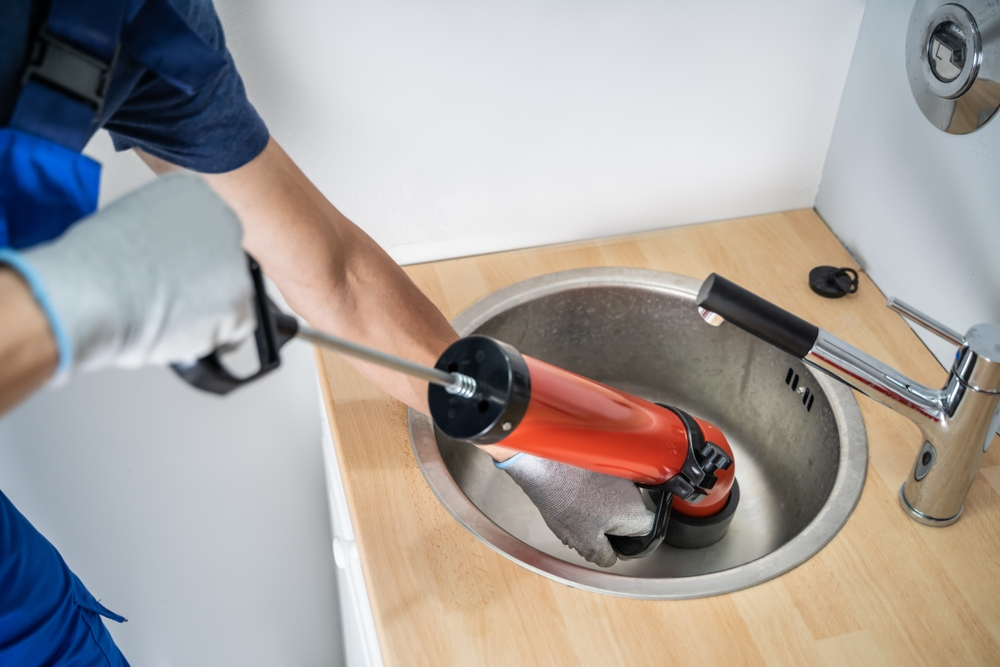
4. Chemical Drain Cleaners: Pros and Cons
Chemical drain cleaners are often sold as an easy way to clear out clogged drains quickly, but they pose serious health risks. Even though these items can clear out clogs quickly, they can damage your pipes and the environment in the long run.
Pros of Chemical Drain Cleaners
- Quick Solution: Chemical drain cleaners can dissolve grease, hair, soap scum, and other debris quickly, often clearing clogs in minutes.
- Easy to Use: These products don’t require any special tools or equipment and are readily available in most stores.
- Accessible: You can find chemical drain cleaners in almost any hardware or grocery store, making them convenient for last-minute use.
Cons of Chemical Drain Cleaners
- Damage to Pipes: Over time, these cleaners’ harsh chemicals can damage both metal and plastic pipes, which can cause leaks or even pipe breaks. It’s especially important to worry about this in houses with older plumbing systems.
- Environmental Impact: Drain cleaners contain dangerous chemicals that are bad for the earth, especially when they get into water systems. They can pollute water and hurt plants and animals that live in it.
- Health Risks: Chemical cleaners can be harmful if they are not used correctly. If you breathe them in, they can burn your skin, irritate your eyes, and make it hard to breathe. When using them, you should always wear gloves and safety glasses, and make sure there is enough air flow.
When Should You Use Chemical Drain Cleaners?
Acidic drain cleaners should only be used as a last measure, after all other options have been exhausted. They work best on grease and hair clogs, but you should stay away from them for serious or recurring blockages. Always do what the maker says and don’t use too much of these goods.
5. Advanced Tools for Drain Cleaning
Many small clogs can be fixed by hand, but bigger problems need more advanced tools. When it comes to tougher clogs, especially ones that are deep in your pipes, the right tools can make all the difference. Professional plumbers often use these tools, but you can sometimes rent or buy them for your own use.
Power Auger
A power auger is basically a drain snake that has a motor. It’s made to get rid of bigger clogs that are deeper in the water system. It can often reach clogs that are several feet down. This tool is great for getting rid of tree roots or big chunks of dirt that a regular drain snake can’t reach.
How It Works: The motor in the power auger turns a flexible wire that can cut through tough clogs like tree roots and clear out pipes of big things that are blocking them.
When to Use a Power Auger:
- Severe blockages that can’t be cleared with a standard drain snake.
- Tree roots growing into sewer lines.
- Clogs that are deep within the plumbing system.
Tip: If you don’t know how to use a power auger, rent one from a hardware shop and ask someone to show you how to do it. Instead, you might want to hire a plumber to do this job, since doing it wrong can damage your pipes.
Hydro Jetting
Professionals use high-pressure water jets to clear out clogged drains. This method is called hydro jetting. This is a great way to get rid of grease, soap scum, and other gunk that has built up over time. It can also get rid of tree roots and other tough blockages.
Benefits of Hydro Jetting:
- Thorough Cleaning: Hydro jetting not only clears out clogs, but it also scrubs the inside of the pipes to get rid of buildup and stop them from getting clogged again.
- Environmentally Friendly: Hydro jetting only uses water, so it is better for the environment than chemical cleaners.
When to Use Hydro Jetting:
- When dealing with recurring or severe clogs.
- If tree roots have infiltrated your sewer lines.
- As part of a regular maintenance plan for older plumbing systems.
Hydro jetting is not a do-it-yourself project because it needs skilled tools and knowledge. If you have a clog that won’t go away or keeps coming back, calling a plumber for hydro jetting may be the best thing to do.
6. When to Call a Professional Plumber
There are times when cleaning your own drains won’t be enough. You might be able to clear out small clogs yourself, but bigger or more complicated problems need the help of a plumber. Knowing when to call for help can keep you from making things worse and keep you from having to pay for expensive fixes in the future. Hydro jetting is not a do-it-yourself project because it needs skilled tools and knowledge. If you have a clog that won’t go away or keeps coming back, calling a plumber for hydro jetting may be the best thing to do.
Signs You Need Professional Help:
- Repeated Clogs: No matter what you do, if your drain keeps getting clogged, it means there’s a bigger problem in your water system. If the pipes keep getting clogged, there may be a problem further down the line or even in the sewer line.
- Multiple Clogged Drains: If you have more than one clogged drain in your home at the same time, it could mean that anything is wrong with your main sewer line. If you have more than one clog, it means the problem is in the middle of your plumbing system and needs to be fixed by a professional.
- Foul Odors: If your drains keep smelling bad even after you clean them, it could mean that there is a serious problem, like sewer gas backing up or a hidden blockage in your lines.
- Gurgling Sounds: If you hear bubbling sounds coming from your toilet or drains, it means that there may be an airlock or the pipe is blocked. These sounds often come before jams that are worse.
- Backed-Up Sewer: If sewage is backing up into your home, this is an emergency that requires immediate professional attention. A backed-up sewer can cause serious damage to your property and pose health risks due to the exposure to raw sewage.
7. How to Prevent Future Drain Clogs
To avoid having drains get stopped in the first place is the best way to deal with them when they do happen. If you change a few simple habits and do some proactive things, you can keep your drains clear and the water flowing easily.
Use Drain Screens
Using drain screens or strainers is one of the easiest and best ways to keep your pipes from getting clogged. These small, cheap gadgets go over your drain and catch hair, food particles, and soap scum before they can get into your lines.
Benefits:
- Prevents hair and debris from going down the drain.
- Easy to clean and maintain.
- Cost-effective and widely available.
Where to Use Them:
- Bathroom Sinks and Showers: Use drain screens to catch hair and soap scum before they create a clog.
- Kitchen Sinks: Place a strainer over your kitchen sink to catch food particles, especially when rinsing dishes or using the garbage disposal.
Dispose of Grease Properly
As mentioned earlier, grease is a major cause of kitchen drain clogs. To prevent grease from hardening inside your pipes, never pour it down the drain. Instead, dispose of it properly by following these steps:
- Pour used grease into a container, such as an empty jar or can.
- Let the grease cool and solidify.
- Once solid, throw the container in the trash.
You can also wipe down greasy pans with a paper towel before washing them to prevent excess grease from entering your drain.
Watch What You Flush
The only things that toilets are made to handle are human waste and toilet paper. Flushing things that don’t break down, like wipes, feminine hygiene products, and paper towels, down the toilet can really clog up your pipes. Things that say they’re “flushable” can still be a problem because they don’t break down as quickly as toilet paper.
Items to Avoid Flushing:
- Baby wipes, even if labeled as “flushable.”
- Feminine hygiene products.
- Cotton balls, dental floss, and Q-tips.
- Paper towels and tissues.
Tip: Keep a small trash can in the bathroom for easy disposal of these items, so you’re less likely to flush them down the toilet.
Regular Drain Cleaning
Even if your drains work fine, you should still clean them every so often to keep debris from building up. You can clean the drains naturally with vinegar and baking soda, or you can just run hot water down them once a week to get rid of any new buildup.
If you want to clear out your kitchen sinks, you might want to run cold water through the garbage disposal after each use.
Annual Professional Maintenance
Along with regular drain maintenance that you do yourself, having a professional drain cleaner come out once a year can also help keep your pipes in good shape. A plumber can look at your plumbing system for problems that might happen, clear out any jams that are starting to form, and do preventative maintenance like hydro jetting to get rid of buildup.
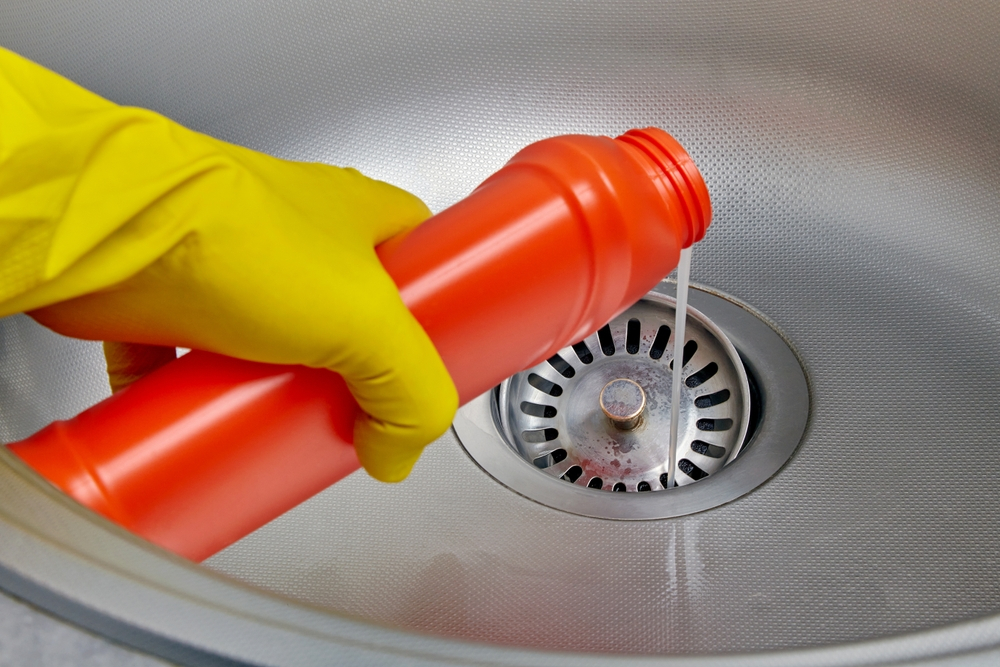
8. The Role of Regular Maintenance in Drain Health
To keep your plumbing system from getting clogged and to make it last longer, you need to do regular repair. You can keep your drains in good shape and avoid expensive fixes by following a few simple rules and having a professional check them once a year.
Why Regular Maintenance is Important:
- Prevents Clogs: When you clean your pipes regularly, you get rid of dirt before it builds up and causes blockages.
- Extends the Life of Your Pipes: By taking preventative steps like flushing your lines and using drain screens, you can keep your plumbing system in better shape and make your pipes last longer.
- Reduces Repair Costs: Taking care of small issues through regular maintenance is a lot cheaper than fixing big plumbing issues like sewer backups or pipes that burst.
- Protects Your Home: By keeping drains clear, you can avoid water damage, mold growth, and other problems that can happen when drains get backed up.
Conclusion: A Proactive Approach to Drain Health
Clogged drains are a normal part of being a landlord, but if you know what to do and have the right tools, they won’t be as bad. By knowing what causes clogs, knowing the warning signs, and using good cleaning methods, you can get rid of small problems before they become big problems. Using drain screens, getting rid of grease the right way, and booking regular professional maintenance are also things you can do to avoid clogs altogether.
Taking charge of your drain health will save you time, money, and stress in the long run. If you follow the advice in this guide, your drains will stay clear and your home will avoid the expensive problems that come with pipes getting stuck.
This longer version goes into more depth about each section, giving homeowners a complete guide for clearing out drains and keeping them from clogging.
Plumbing Services CA
https://maps.app.goo.gl/31Yt4rhDrainzNJ4A
(279) 203-0765
https://plumbingservicesca.com/

